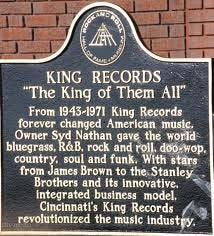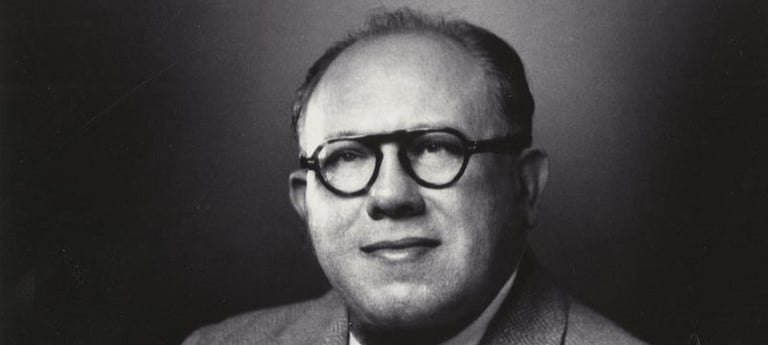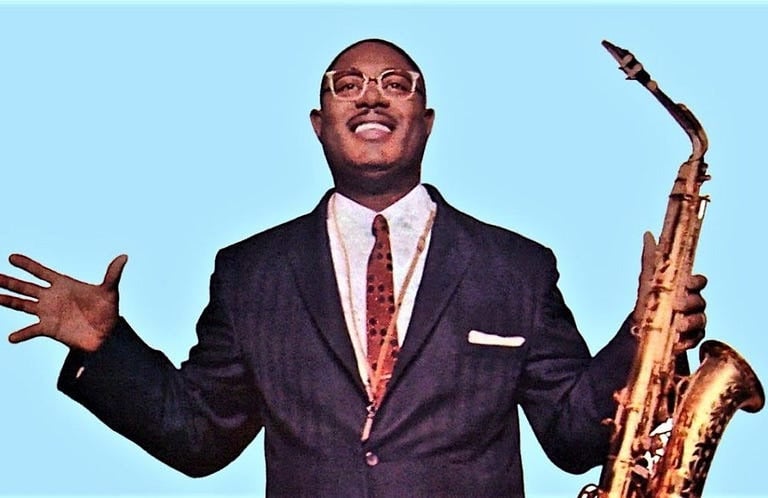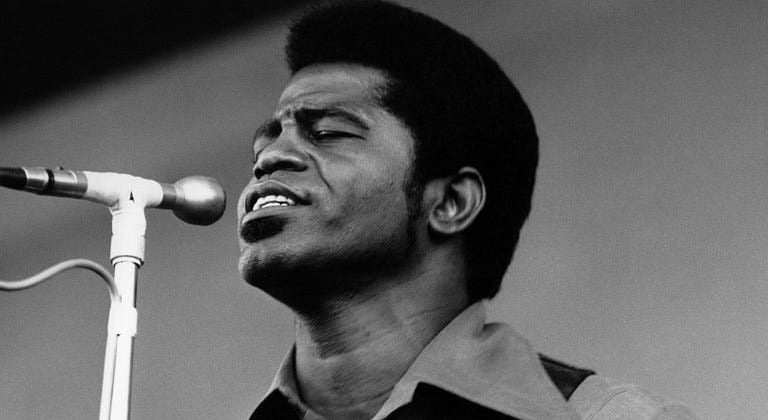Cold Sweat: The Birthplace of Funk and The Legacy of King Records
How the embrace of diversity created one of the most influential (yet unheralded) record labels of all time
MUSICHISTORY
Da Chierophant
3/2/20249 min read


The line “I don’t care, about your past, I just want this thing to last” explodes from Mr. Dynamite, The Godfather of Soul, The Minister of The Super Heavy — though he only had accrued a few misnomers by then. To the other men in the room, the world at large, and maybe even to James Brown himself, the song was ostensibly about a woman. As history would have it, those particular lyrics were truly being sung to the music industry at large, his rivals, and the whole established order. Over a simple groove that both confounded and frightened his contemporaries, Clyde Stubblefield, Maceo Parker, Pee Wee Ellis and James Brown laid down an innovative new sound on top of a borrowed Miles Davis lick which changed the course of music history by creating a new genre called “Funk”.
Much has been written about “Cold Sweat” including it’s introduction of a new type of drum break, the concept of being “on the one”, its potential progeny of funk, and the undoubted contribution to sampling culture. But the story of its recording place, King Records studios, is much more opaque. Despite its relative obscurity compared to other labels such as Chess, Motown, or Capitol records, Former Rock and Roll Hall of Fame President Terry Stewart said it best in 2008:
“Between 1943 and 1971, the address of 1540 Brewster Avenue in Cincinnati was home to some of the most vibrant and eclectic music-making in America. There was never a more important piece of real estate musically or culturally in the history of popular music”
King Records’ story is inexorably tied to Syd Nathan, an unrelenting businessman who had many failed endeavors before a series of prodigious events and apparent misfortunes lead him down a path to eventually own one of the most prolific record labels of all time. Syd Nathan’s story, and ultimately his success, is explicitly tied to his admittedly profit motivated but nevertheless groundbreaking embrace of diversity and trust in talent who built his business into the legend it became. Many of the recording industries most influential artists, among them Earl Bostic, James Brown, Freddie King, Hank Ballard, Etta James, and Ike Turner, were thrust into the limelight with King Records.


Before founding King Records, Syd Nathan’s difficult story could be considered relatively unremarkable. Born in 1903, his asthma and vision problems caused him to drop out of school in grade 9. He came of age in the depression era and had tried his hand in a number of businesses tangential to the entertainment industry: drummer in a local speakeasy, amusement park concessionaire, shooting gallery owner, radio salesman, wrestling promoter, and traveling jukebox supplier. He subsequently took a long, twisting journey before he finally opened his recording studio, identifying a demand and capitalizing on an overlooked subset of music culture in a way that is — for better or worse — uniquely American.
As with many American success stories, Nathan’s required determined perseverance, a keen eye for business, and a good deal of luck. He was in his mid 30’s when he owned his first record store, a middling business venture selling pop records of the time. Legend has it that he found the insight that eventually guided his vision from collecting on a $6 loan that was repaid in “Hillbilly” genre records (today it would likely be considered "bluegrass") — at the time an underground but popular style of music born from when country western hit the Appalachian mountain region. Upon selling these records at his store, he tripled his income from the loan repayment and identified the market for the genre. Even then, Nathan did not fully capitalize on this opportunity as he soon sold his store to move to the warm shores of Miami and open a photo finishing business — which again quickly went under. With just a few dollars to his name, Nathan returned to Cincinnati and “negotiated” his way into leasing a record store in a predominantly black neighborhood by cleaning the property for two weeks to show his commitment to the landlord before admitting he couldn’t actually pay the rent. While this was the first instance of Syd Nathan's arguably exploitative personality, it would not be his last.
After many false starts, Nathan finally was finally close to finding his niche. Opportunity manifested itself when a former colleague decided to go out of business, liquidating his inventory of records for 15 cents a piece. Despite not having knowledge of Country or R&B genres he had just purchased, he took advantage of its profit potential and began to find success. Driven by past failures, he capitalized on lessons he had learned (plus the general lack of access to records during wartime) and opened up King Recording Studio in 1943. His true brilliance in business was not his keen ear, but his idea to control the supply chain, as he bought property with loans from his family and established his own distribution and printing network.
Rural farms and the budding second industrial revolution converged in Cincinnati and attracted a new culture to the region— poverty stricken Appalachian whites and black factory workers who were fans of newly emerging forms of music including Country/Bluegrass and R&B, respectively. After two years of releasing Country (or what were then marketed as “Hillbilly”) records under King, Nathan started Queen Records in 1945 as a R&B (or what were then marketed as “Race”) “sister” label to King. This convergence of culture brought with it talented musicians focused on creating new sounds, and the mixture of R&B and Country has been identified as a pre cursor to the creation of Rock and Roll. After years of perseverance, Nathan took a chance that would lead him to both legendary and notorious status in music, diversity, and industry.
While the Country side of King records hummed along, Queen Records quickly built a roster of talented and groundbreaking black R&B artists. It was this embrace of diversity that truly launched King Records into the legendary label it is today. While Nathan never displayed a particular keen ear for this type of music, he understood it's potential and acquired the masters from many smaller black recording labels, eventually creating a partnership with legendary Saxophonist/Producer/bandleader Earl Bostic. This partnership, and with it the embrace of black musicians, was the genesis of King’s transition into the groundbreaking label it would become.


Earl Bostic is widely regarded as one of the most distinctive and talented saxophone players who ever lived. Bostic was active on King beginning in the late 40’s, after Nathan purchased his masters, and continued recording under this label for the next 20 years. While arguably underrated in modern jazz circles, Bostic honed his craft playing live shows and brought with him a bluesy groove that expanded the idea of big band forward into modern jazz. Under Bostic’s expert musical guidance, Queen Records recorded with some of history’s most revered musicians, procuring the talents of John Coltrane, Richard “Groove” Holmes, and Joe Pass as studio musicians. The success of Queen records eventually convinced Nathan to focus on R&B records and he began releasing this genre under the King label in 1947.
While Nathan had proved himself a shrewd businessman, his success was ultimately build upon the black artists his label recorded, namely James Brown. Federal Records was created as a subsidiary of King to give A&R man Ralph Bass his own label, which eventually became an incubator of sorts to many musicians who now are considered some of the most influential of all time, including Etta James, Ike Turner, The Dominoes, and Johnny “Guitar” Watson. The story of King’s R&B arm is linked very closely to his trust in A&R who unearthed a pipeline of singular black musical talent.
Bass was the man who discovered James Brown — who Nathan believed would be a flop based on the repetitive and hypnotic style that eventually came to define Brown’s sound. Despite his paltry $200 investment in signing the artist, Nathan’s reaction to “Please, Please, Please” was quoted as:
“That’s the worse piece of crap I’ve heard in my life. It’s someone stuttering on a record only saying one word.”
According to legend, Bass was so confident that he risked his whole career on James Brown, saying he would quit the label if he hadn’t found a star. Fortunately for King Records, Bass, and Brown, Nathan was dead wrong as “Please, Please, Please” was a hit that charted at #6 on the R&B charts. It was another two years and multiple singles later that James Brown found his second hit with “Try Me” but Brown never looked back, ushering in what many consider the most prolific period of King Record’s musical output. The success of Brown lead to signing recording artists like The Dominoes, Freddie King, and Willie Dixon. The artist that Nathan nearly rejected became the backbone of his business.
King Records continued its prominent run through the 60’s relying heavily on The Hardest Working Man in Show Business’s legendary recording output as well as acquiring distribution rights to other R&B artists such as Nina Simone. Despite a generally tumultuous relationship with Nathan, Brown conceded that the spotlight that King Records provided was critical to his success, saying:


Though Nathan never said it on the record, it's a near certainty that the feeling was mutual, as Brown went on to become one of the most iconic and prolific musicians of all time. James Brown not only was King Records' most profitable artist, he also birthed a genre of music while helping launch the career of jazz fusion bandmates Maceo Parker, Bobby Bird , Fred Wesley, and others. James Brown’s music continues to live on through both it’s cultural impact as well as being arguably the most sampled artist of all time.
“I would be telling a lie if I said I would be a world star without the help of men like Mr. Nathan. He was the first one willing to take a chance on me.”
The fall of King records was just as meteoric as it’s rise, with Nathan becoming implicated in the “Payola” scandal and ostracizing his talented A&R, who had been instrumental in building the label, by letting them take the fall. Nathan passed away in 1968, less than a year after James Brown unleashed “Cold Sweat” on the world, and King Records was no longer in the recording business by 1973. Despite being closed for over 50 years, the King Records building at 1540 Brewster Avenue avoided demolition 2015 by gaining recognition as a historical site, and there are plans to convert the property into an education center spearheaded by bass legend and Brown and P-Funk contributor Bootsy Collins.
Perhaps ironically, the history of King Records is as checkered as any in music. What started off as a “Hillbilly” Label (Slogan: “If Its a King, Its a Hillbillly…. If its a Hillybilly Its a King”) bucked conventional music of the time and made a name for itself by diversifying its sound, eventually becoming what many people consider the site where the first funk song was ever recorded. Beyond the Payola scandal, there are still ethical questions that automatically arise in an industry that often exploits its most talented, amplified by the fact King Records was a segregation era, white owned label that largely built by profiting off black talent.
The history of King Records is filled with many lessons for those willing to look. Chief among them is how bucking societal norms to embrace diversity can lead to great success and influence. Another is that of Syd Nathan, a man who presumably leveraged the lessons from his many failures into a massive cultural movement (and massive profit), albeit mostly built upon a ruthless system that encouraged exploitation of the talent of marginalized people. A more uplifting meditation to consider is how James Brown’s hard work and dedication to his craft that eventually led him to be one of the greatest artists the world has ever seen. Another positive that can be gleaned is the idea that surrounding yourself with talented people and giving them opportunity can be enough to create an empire, which can collapse just as quickly when that talent is mistreated. And ultimately, one must consider the importance of both opportunity and perseverance (not to mention role of power dynamics in a capitalistic society) in being able to achieve “The American Dream”.
